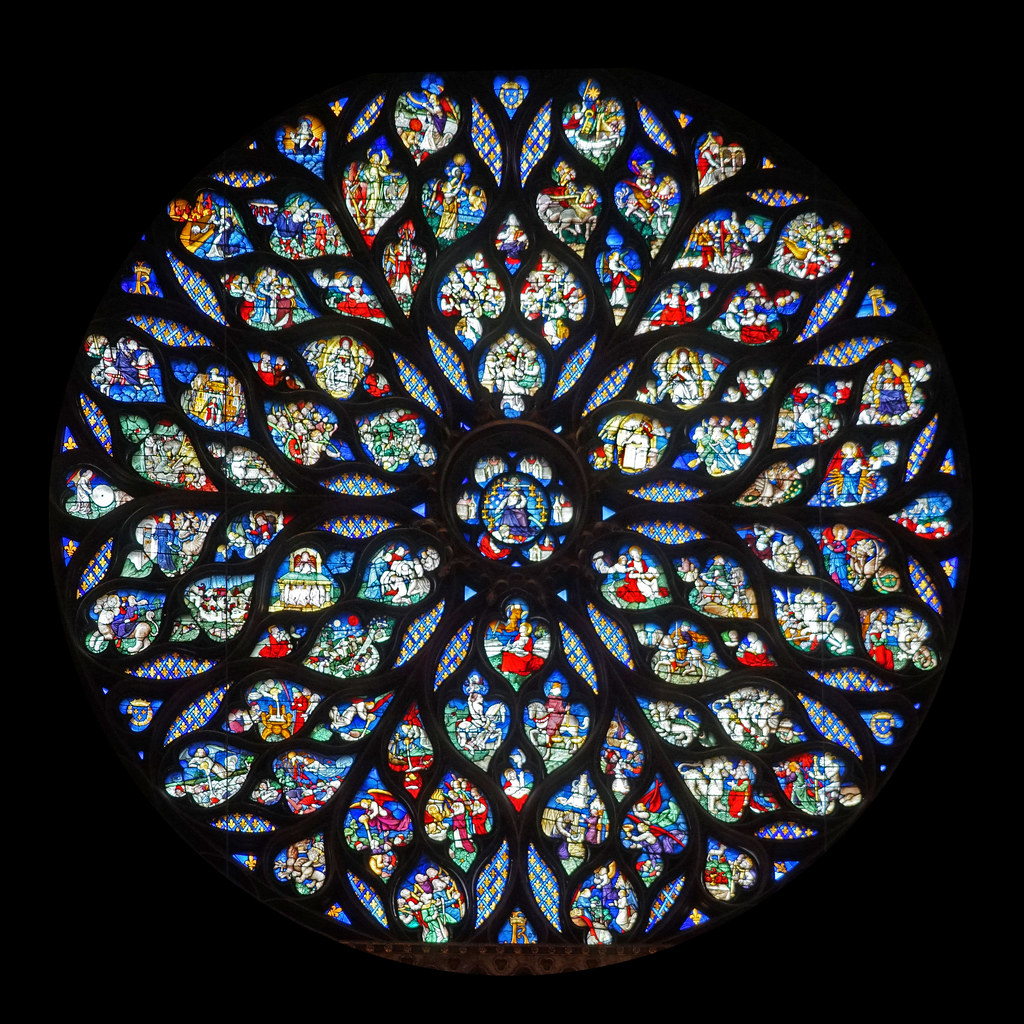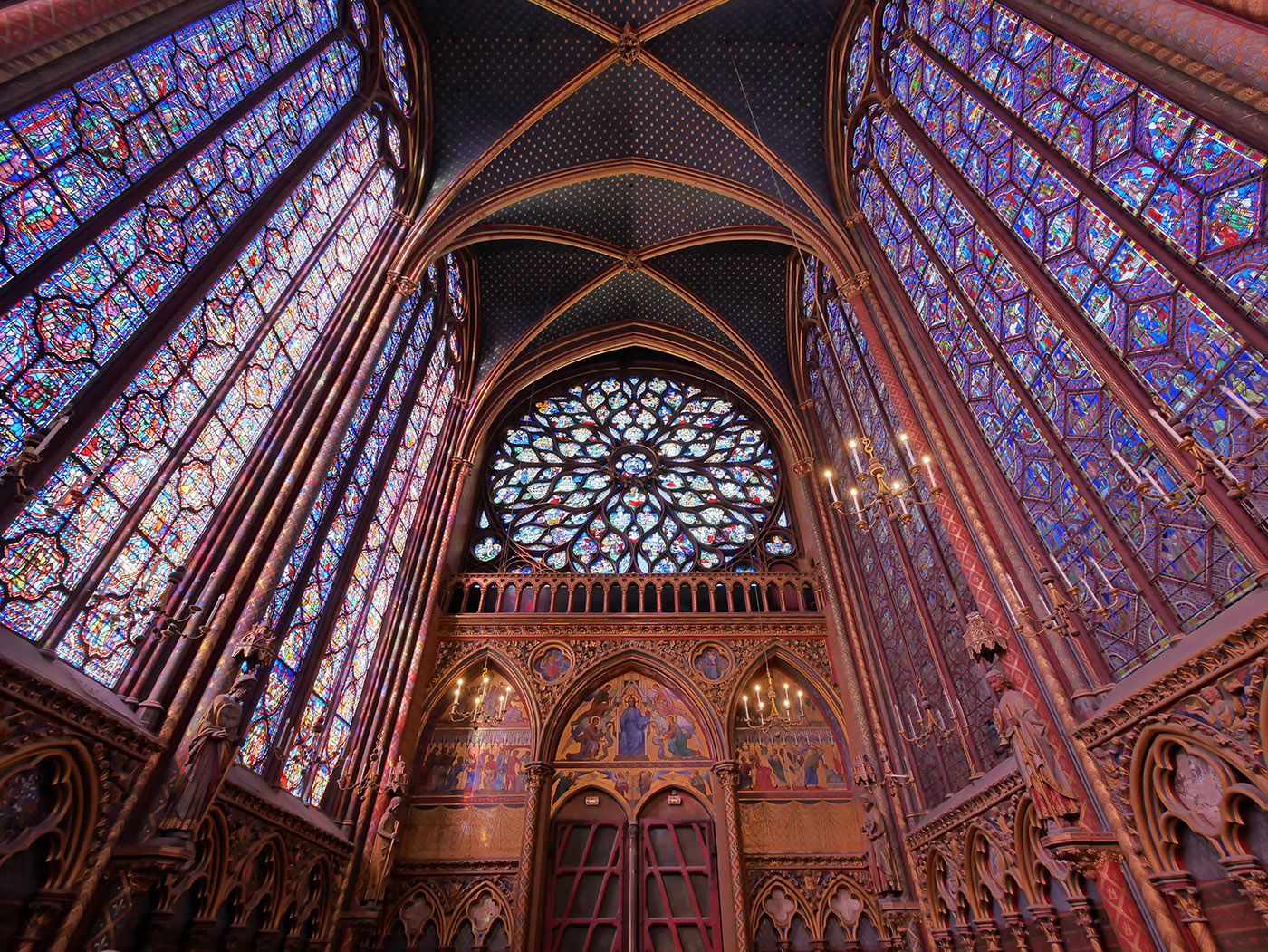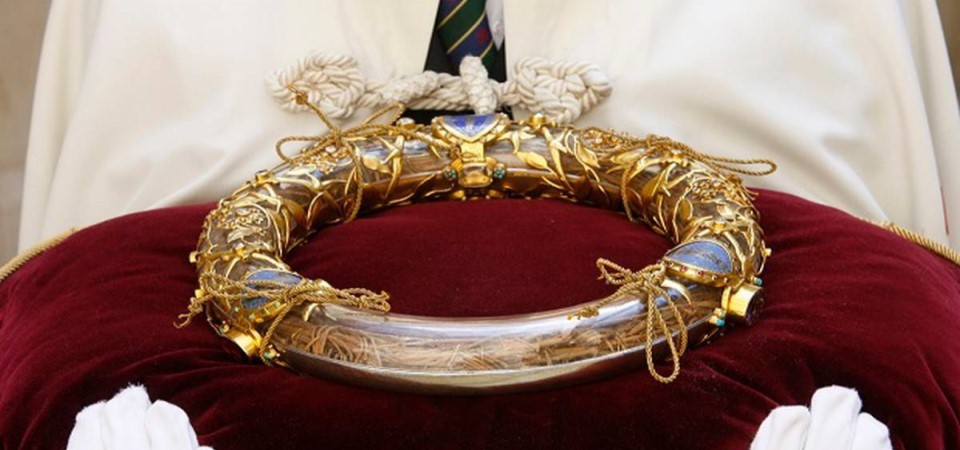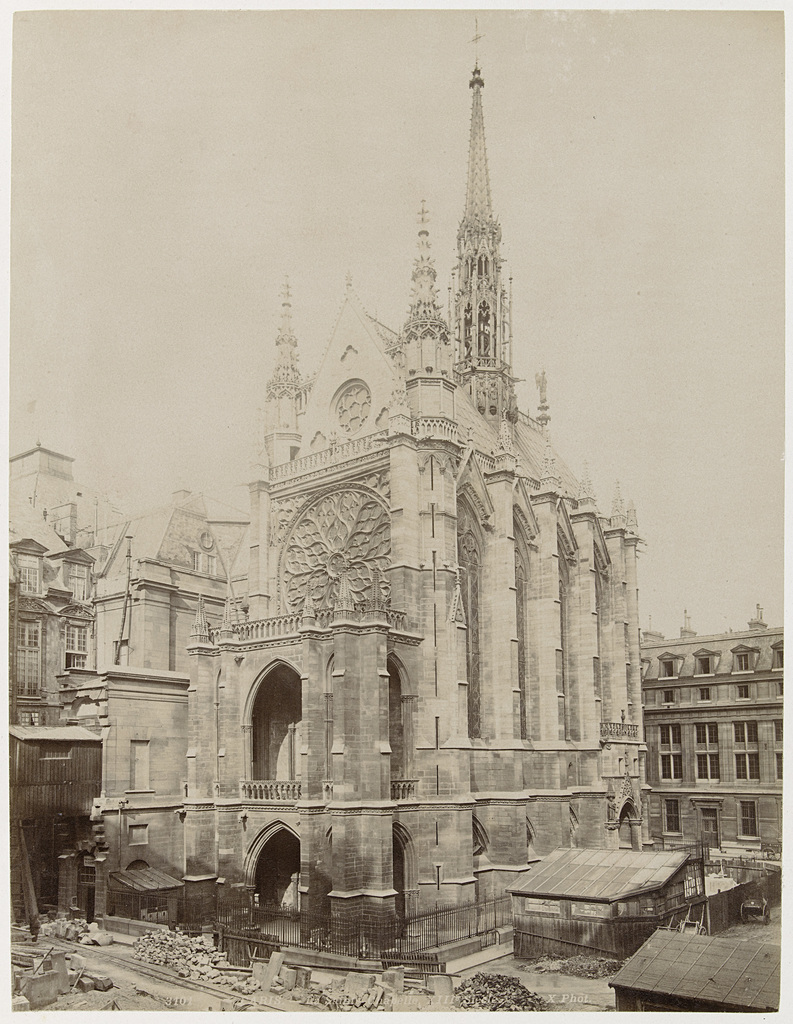Architecture

The construction and treasures of the Sainte Chapelle
Built at the request of Saint Louis to house the relics of the Passion of Christ, the Sainte-Chapelle is particularly distinguished by its marvelous stained glass windows.
Like all Gothic buildings of this size, the Sainte Chapelle was built to let in light (while sublimating it), and to build as high as possible to get closer to the heavens. It was built on two levels, the lower chapel, dedicated to the palace servants and officers, and the upper chapel, larger and richer in stained glass, dedicated to the king and his family. These windows are supposed to represent several scenes from the Bible, from the creation of Adam and Eve to the Apocalypse. The Sainte Chapelle housed no less than 22 relics that Saint-Louis had managed to obtain (some of them for a price that exceeded the cost of building the chapel). Today, only 3 remain: a fragment of the cross, a nail, and the crown of thorns, all 3 of which had been kept in the treasury of Notre-Dame and were fortunately saved from the fireRead more
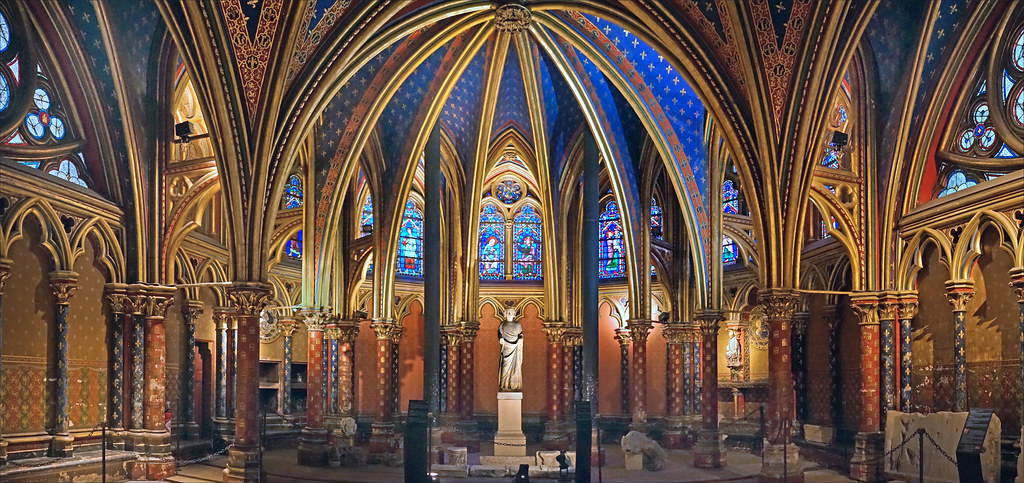
The Lower Chapel
Slightly high and dimly lit for a religious domain, the lower chapel looks like a crypt, two colonnades, responsible for supporting the upper chapel
Because of the damage it has suffered, the lower chapel and its current decor are largely a reconstruction of the 13th century, carried out without ancient sources and therefore probably different from what could be seen originally, but given its intended use for servants and the little light that could be let inside, we suspect that it was mainly designed to serve as a support for the high chapel, but currently the various renovations and embellishment work have made it more dazzling than ever.Read more
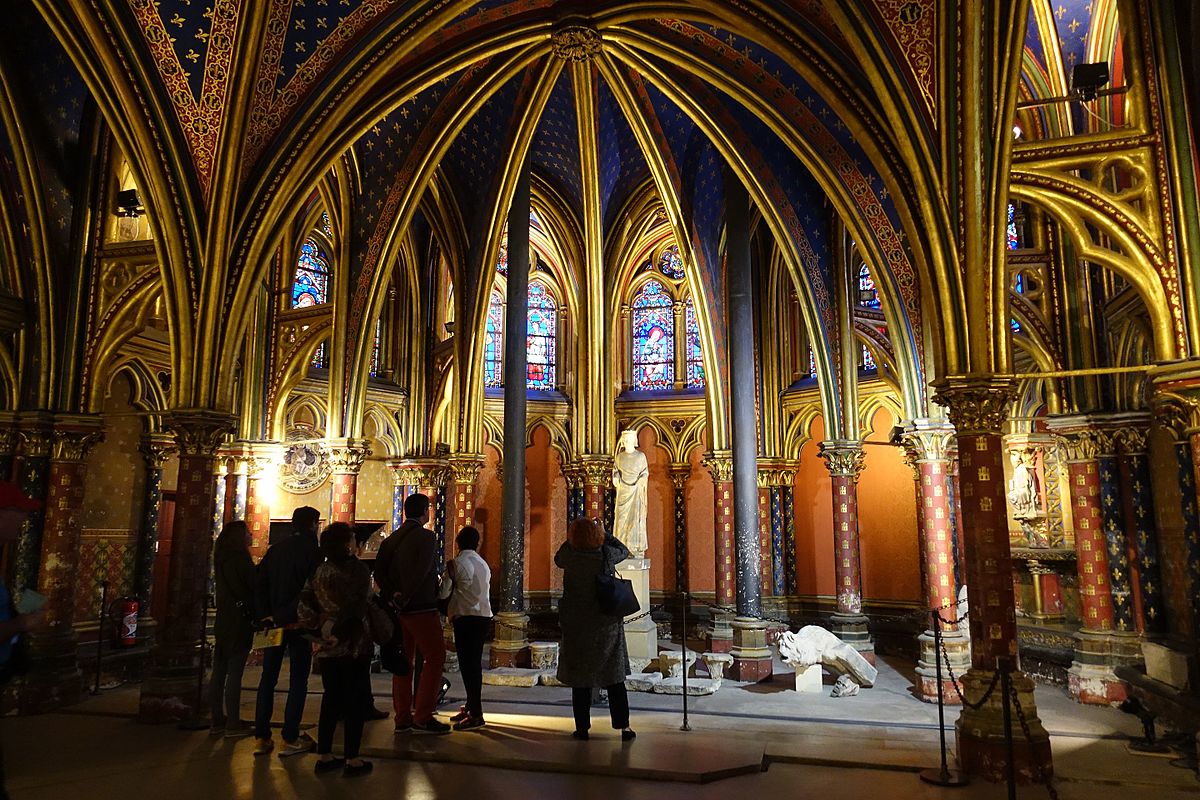
The Upper Chapel
Unlike the lower chapel, the upper chapel is not only larger, but also more light, more work, and currently quite faithful to the origin
The light enters much more easily thanks to the addition of many stained glass windows, about 15 glass roofs surrounding the room by 15 meters each, i.e. more than 1100 glass panels of all colors, bathe the place in their colored lights. glasses, and tells the beginning of the Bible in pictures. It was there that the relics were kept, and that the royal family prayed when they lived in the Palace of the city, which became the Palace of Justice.Read more
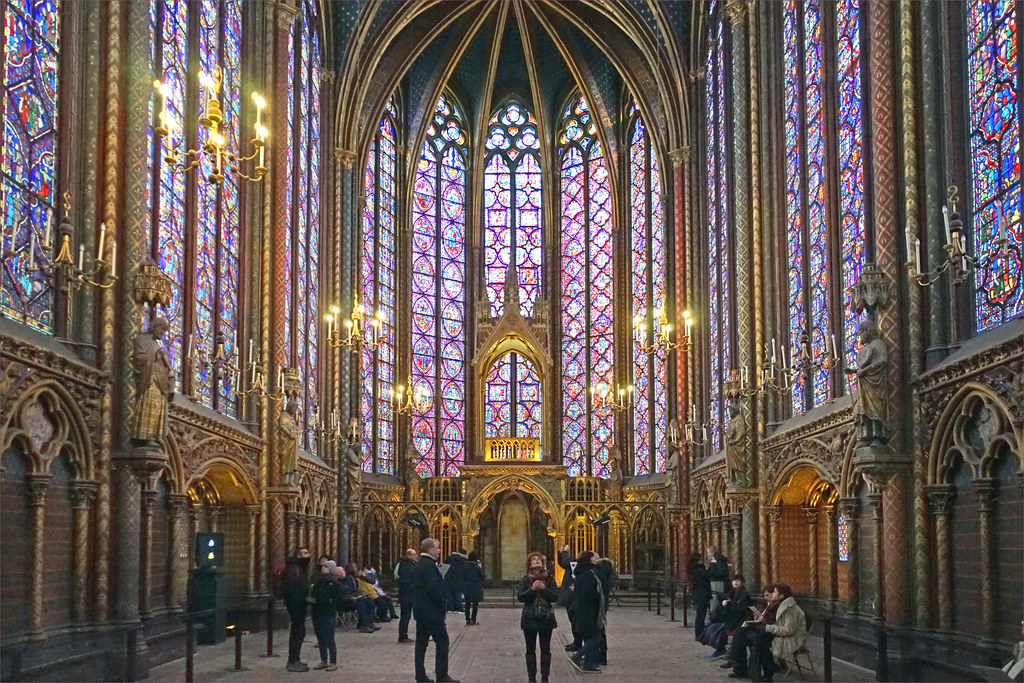
The rose window, a perfect example of the beauty of the chapel
The rose window is in the Flamboyant Gothic style, a name that comes from the flame effects used for the stained glass windows. It does not date from the 13th century like the windows, but from the 15th century. It has 87 petals. Restored in 2014, it is a piece mistress of the story that these stained glass windows tell us, and embellishes the entire western facade when the sun shines on this side of the building
